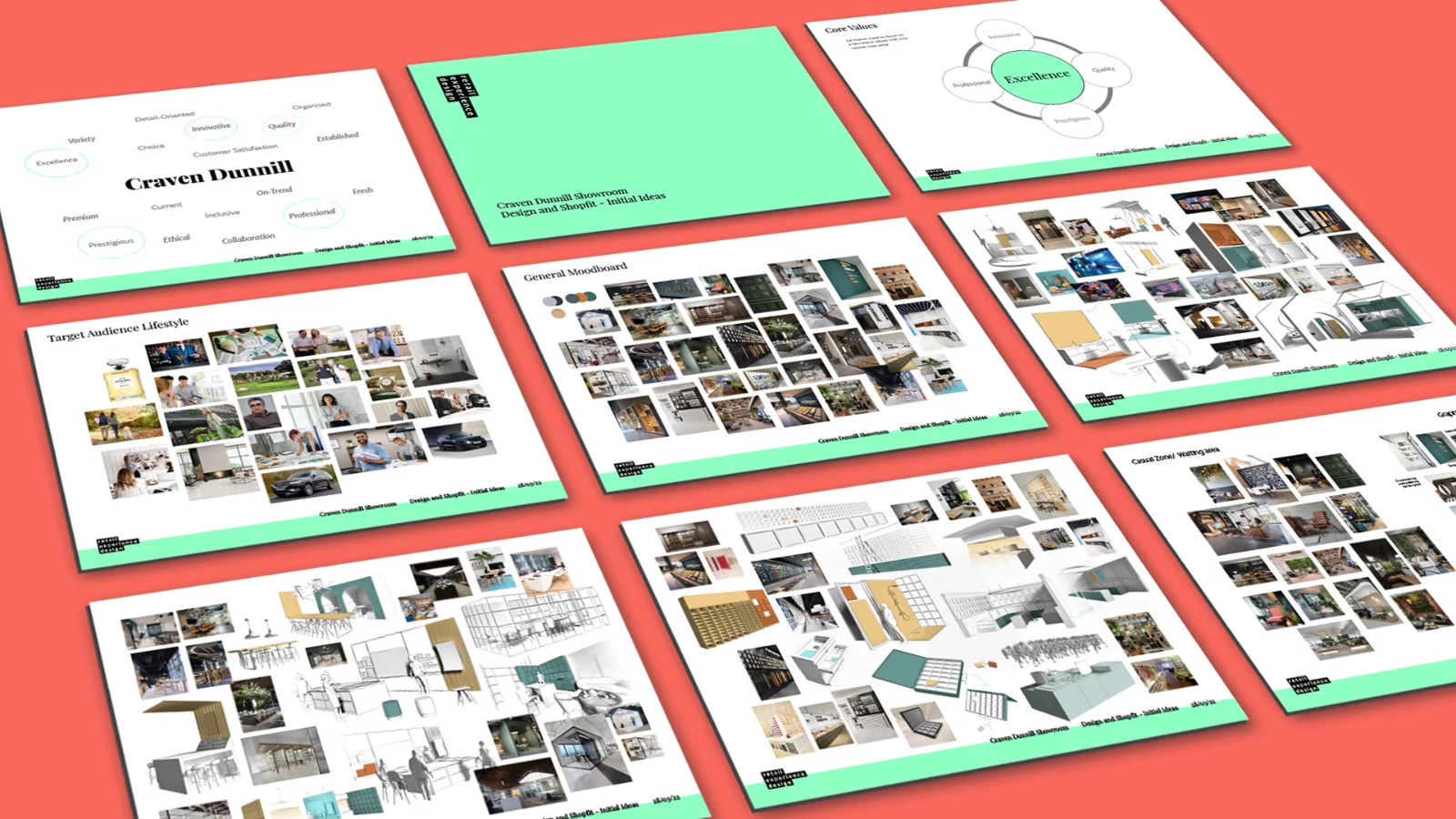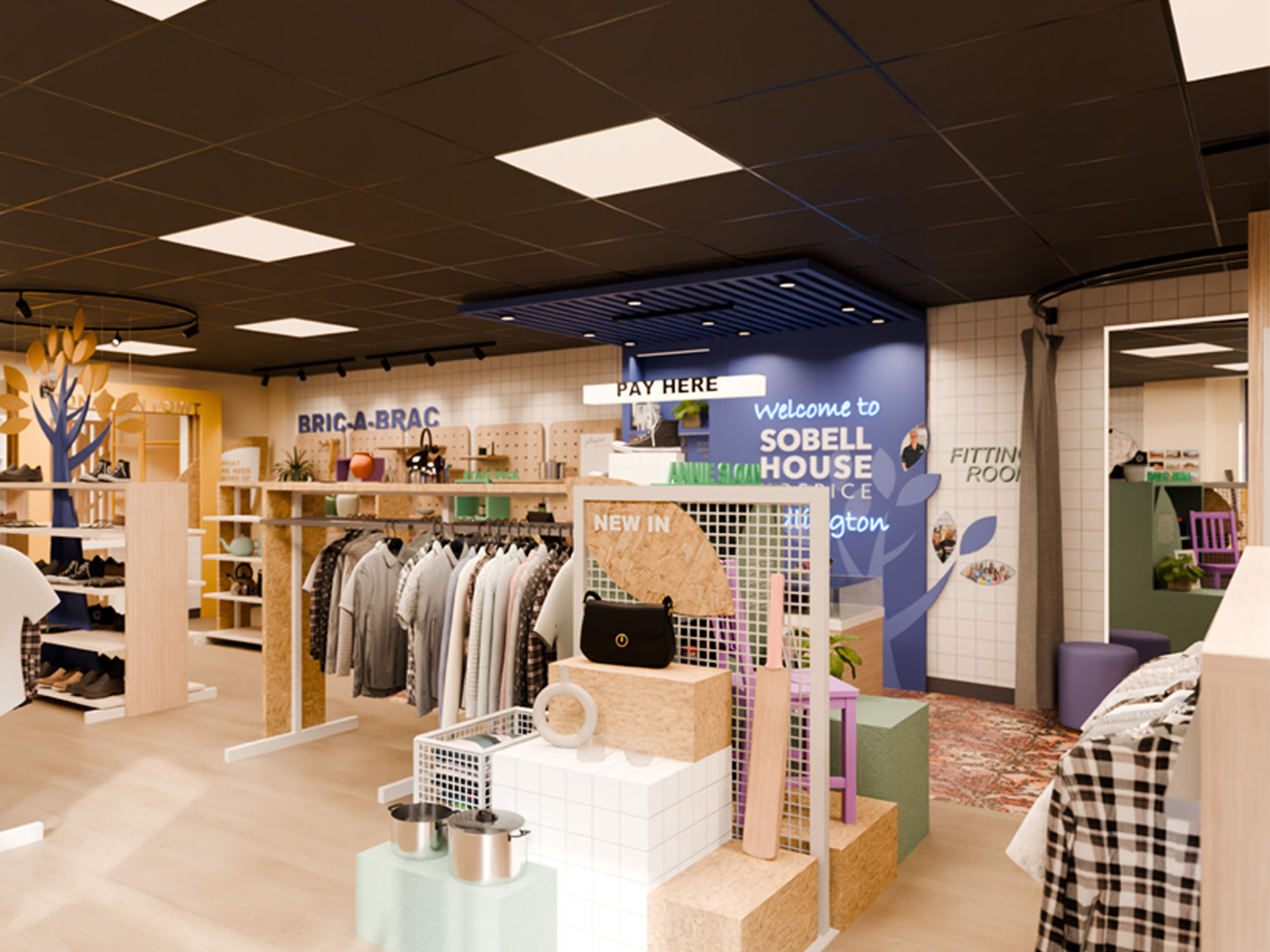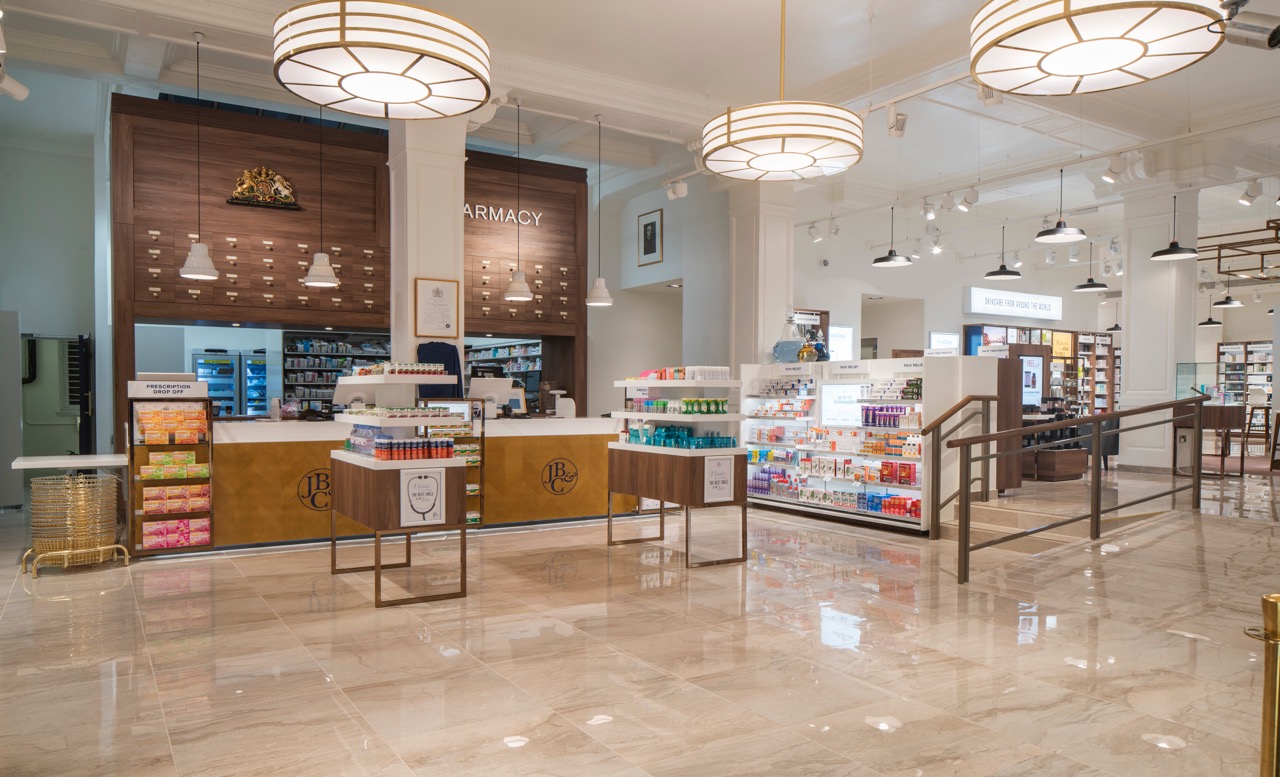5 Key Commercial Interior Design Trends for 2025
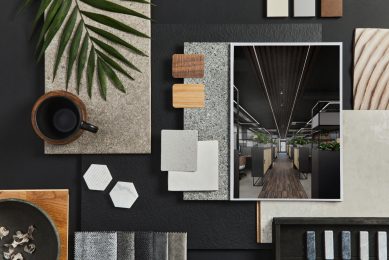
In the dynamic world of commercial interior design, staying informed about what’s fresh and functional can make all the difference.
At RED, our interior designers are always looking to keep on top of the latest trends that are reshaping commercial spaces. And we’ve asked them to share their thoughts on the most exciting and interesting new approaches in retail design.
From clever modular setups to the calming effects of biophilic design (taking inspiration from nature), we’re here to help you discover how these trends can enhance your space, making it work better for your customers and your business. Let’s explore what’s new and what’s working.
Modularity
“We’re seeing more businesses embracing adaptable design schemes that can be easily reconfigured for different purposes – whether that’s a seasonal promotion, elevating new product lines or hosting internal staff events.
“Designs are increasingly including movable fixtures, adjustable shelving and multipurpose spaces. This trend for flexibility started with pop-up shops but it’s relevant for all business from store designs to workspaces.”
Simon, Technical Designer
Modularity in design can provide a huge level of flexibility. This can be ideal for mixed use spaces, shared spaces, or even to replicate design elements into new spaces.
This trend initially started with pop-up shops, which naturally needed a design that could be packed up and moved to a different location, or to fit within a space that already had an existing brand.
But the flexibility of modular interior design also makes it an excellent option if you have a mixed use space, or want a consistent design in more than one location.
It can be much easier to adapt smaller design elements into a new space, so a modular approach can be a great idea if you’re opening in multiple locations, or expect to expand soon.
Modular design is also a great option for a mixed use space, as it enables you to create design elements that can be adapted depending on your current needs and requirements.
In our project with HOYA, it was this requirement for flexibility that led us to a modular style design. This allowed us to create spaces that had multiple purposes, and could be used by different teams at different times.
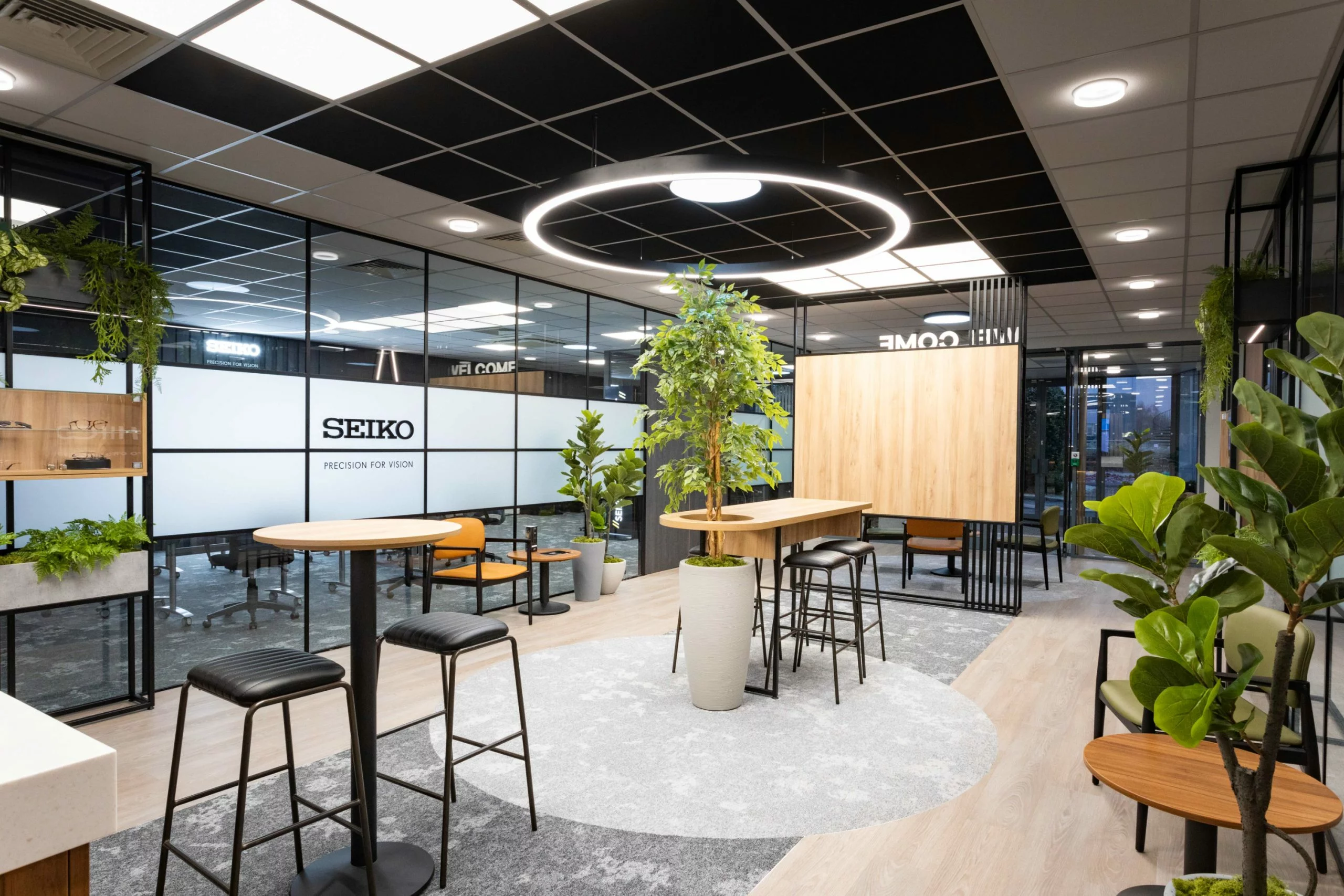
Sensory elements
“With the rise of wellness, stores across the spectrum are focusing heavily on sensory elements to create a calm, tranquil feel.
“You can expect to see more ‘biophilic design’ – injecting greenery and natural materials. Lighting, sound furniture and even scent can be used to create a spacious feel or a cosy atmosphere – whatever works for your brand and encourages customers to relax and stay in the space for longer.“
Taylor, Lead Creative
Biophilic design takes inspiration from the natural world, and draws organic elements into your space. This can be through colours, materials, plants, imagery and more.
These natural elements provide a sensory experience for clients and customers, with scents and textures as much a part of the design as visuals.
Sensory experiences are naturally aligned with businesses such as salons, spas and wellness facilities, but can also play a role in other retail and commercial design scenarios, particularly office environments.
One of the great aspects of sensory interior design is how it can bring the outdoors indoors. This can be hugely beneficial in spaces with poor or restricted lighting, such as our One Wellness project.
Initially, the windows of this location looked out over a car park. It was all grey concrete, and not very restful or inspiring. By transforming those windows into canvas covered lightboxes, we brought natural imagery, light and brand messaging into the space – all on a tight budget.

Sustainability
“Sustainability is still the hot topic in commercial interior design. Consumers aren’t just looking for sustainable products – they want to buy and support businesses who show their respect for environmental issues within their physical stores or physical environments.
“More and more of our clients are asking us to incorporate sustainably sourced building products and energy-efficient appliances, as well as looking at how we can repurpose and upcycle existing elements.”
Dean, Creative Director
Another area where natural elements are being brought into commercial interior design is through sustainability.
Sustainability is a big factor for businesses, and most people are looking for sustainable options in every part of what they do, from paperless administration, to cutting down on their energy usage.
Interior design is no exception, and in fact, thinking about sustainability in your refurbishment can provide you with long term solutions such as energy efficient appliances, as well as short term options that may save money, such as upcycling current fixtures and fittings.
Clients and customers are more and more likely to be influenced by your organisation’s commitment to issues such as climate change – particularly if your target audience is younger.
When working with Warwick SU on their Terrace Bar, sustainability was an important element of their redesign, as was keeping in budget. One of the strategies we implemented during this project was through enhancing and improving what was already there, with new additions to take the design to the next level.
This included restoring the beautiful copper ceiling and wooden dancefloor, while the bar was reimagined with striking new tiling.
This enabled us to create a design that looked brand new and modern, but with a fraction of the environmental impact.
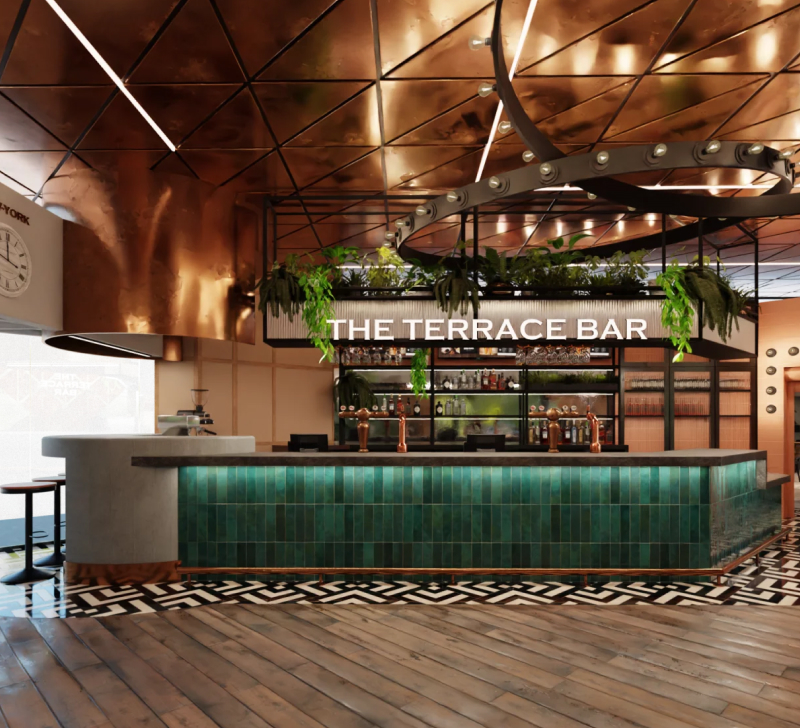
The physical experience
“The growth of online shopping has skyrocketed. But, in turn, consumers’ desire to view, touch, and interact physically with products has been amplified. People increasingly want to escape their screens and enjoy the in-store experience, which is driving consumers back to physical retail.
“Looking forward, it’s the retailers that can successfully create a memorable, unique in-store experience and make the most of their physical environment that will stand out from the competition.”
Taylor, Lead Creative
In-person shopping is an experience, and right now, more people want their shopping trip to be more than scrolling and clicks. Whether it’s dissatisfaction with online shopping, or a desire to return to retail as a pastime, more people want to come in store to browse and purchase products.
But with online competition not going anywhere, that means your in-store experience has to be high quality and immersive. This makes coming in-store feel like an activity, like a treat, rather than something that’s necessary.
The Betterlife project is a great example of this theory in action. Here we created an interactive experience that encouraged people to engage with the products on offer.
By opening the space to those sorts of experiences, it also opened conversations where customers felt confident talking about their needs and asking questions about what would be best for them.
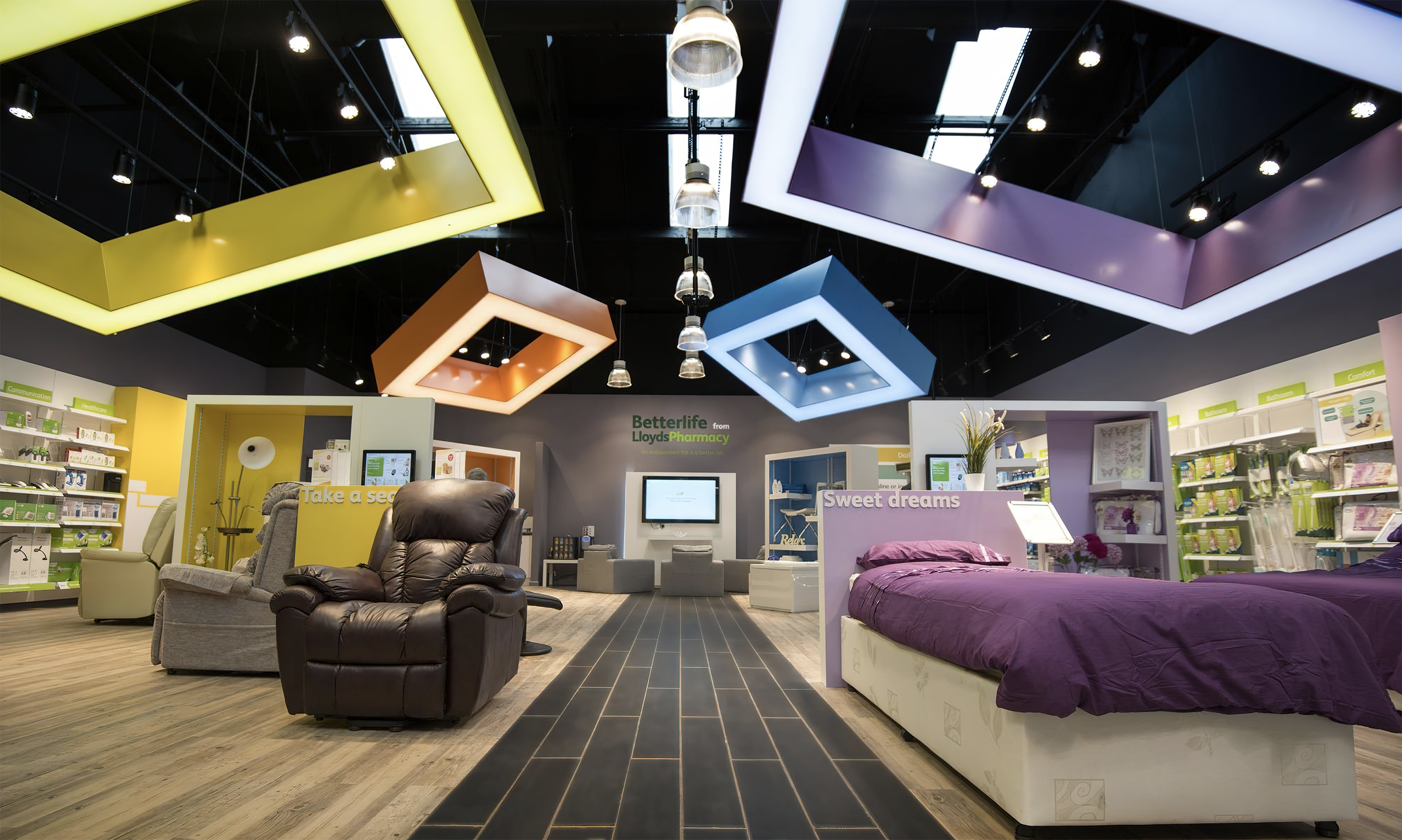
A love for local
“We’re seeing the enduring appeal of local shopping. Whilst the high street is undeniably fragile, consumers continue to champion independent and local businesses. They value the convenience, the connection with community and the personal service that big brands can’t always deliver. “
Poppy, Junior Designer Lead Creative
With more people coming back for in-store experiences, there is also a drive for more bespoke, unique and authentic experiences. This naturally turns people towards local and independent businesses, over larger, more impersonal chains.
Creating a space that feels connected to its audience and its community is a great way to ensure you’re tapping into your customers’ motivations and drivers, and can help you create a really authentic, original style.
Tapping into this desire to support local businesses can be a win-win for you and your customers, and a way to build a real community with them.
Meli already had an established chain of pop-ups, but for this new venture, they needed to create a brand that was authentic to their Greek roots and menu, and provided an inviting, open space for customers to enjoy.

Retail design trends 2025
Interior design trends for commercial spaces are always evolving. Over the last few years these changes have been more rapid and dramatic than ever.
In 2025 we’re seeing new changes in the commercial design landscape, as people look to embrace the experience of in-person shopping once more.
Our top 5 retail interior design trends for 2025 all reflect that shift in customer expectations, with most of them focused around creating a calming, comforting and flexible in-store experience.
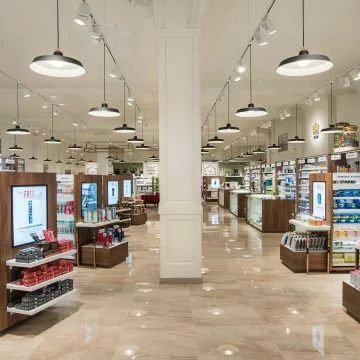
Let’s transform your space together
If you’re looking to improve your commercial interior for 2025, RED can help you create a design that truly delivers. Get in touch with us today to find out more.
Contact us